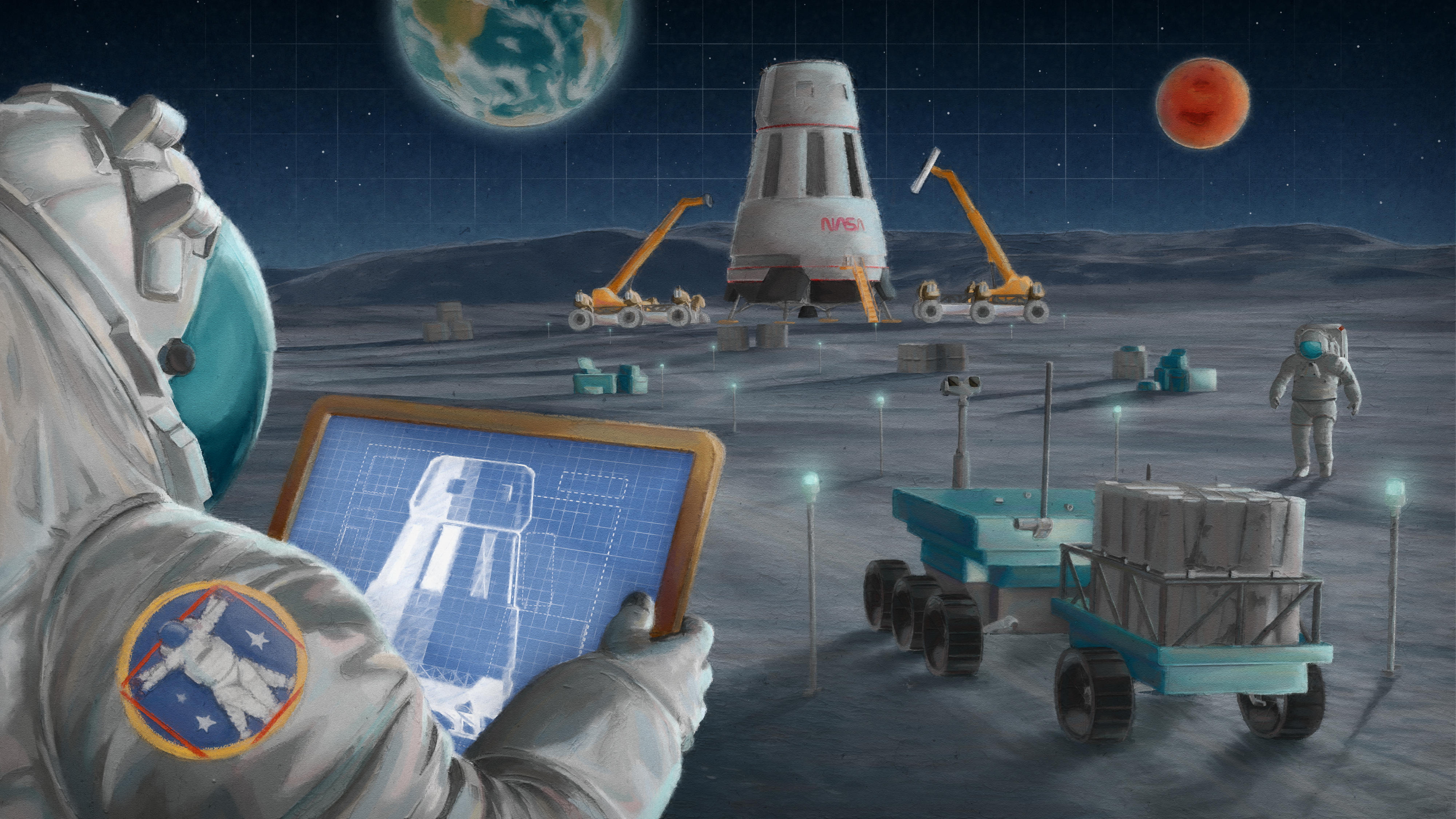Tender number: NNH16ZCQ001K-Annex-R
16 August 2024 – Draft tender published
The National Aeronautics and Space Administration (NASA) intends to issue a request for proposals under the Broad Agency Announcement (BAA) “Next Space Technologies for Exploration Partnerships-2” (Next STEP-2) to solicit industry-led concept definitions and maturation studies addressing lunar surface logistics and unmanned lunar surface mobility capabilities.
NASA’s Moon to Mars Architecture defines the elements required for long-term, human-led scientific discovery in space. NASA’s architectural approach synthesizes agency-developed goals into operational capabilities and elements that support science and exploration goals. Working with experts from the agency, industry, academia, and the international community, NASA is continually evolving this plan for human exploration, putting humanity on the path to the Moon, Mars, and beyond.
NASA has identified two gaps in its lunar architecture: an integrated surface logistics architecture and unmanned surface mobility systems for lunar surface cargo. The goal of these studies is to solicit industry proposals to conduct studies specifically focused on the envisioned logistics and mobility capabilities as outlined in NASA’s 2024 Architecture Concept Review (Lunar Surface Cargo, Lunar Mobility Drivers and Needs) and 2023 Architecture Concept Review (Lunar Logistics Drivers and Needs) white papers.
The Exploration Systems Development Mission Directorate (ESDMD) Strategy and Architecture Office (SAO) Lunar Logistics and Mobility Studies BAA (NextSTEP-2 Annex R) is structured to achieve the following objectives:
- Identify innovative strategies and concepts for logistics and mobility solutions. This can include a variety of topics including but not limited to:
- Synergies between logistics and mobility-specific skills.
- Identification of logistics and mobility specific requirements that may go beyond current and/or planned commercial capabilities.
- innovative ideas for partnership business models, including intellectual property, asset ownership and timing of asset delivery and/or services to the government.
- the use of advanced robotic and/or autonomous capabilities.
- Evaluate and understand the drivers of technology readiness, cost and schedule to meet technical reference requirements and/or validate a concept of operations.
- Obtain data that supports NASA’s ability to define, derive, and validate logistics and mobility requirements. This data could serve as the basis for a baseline mission concept that identifies options and approaches to meet logistics and mobility-specific capabilities. This data could also contribute to verification/validation of logistics and mobility approaches that could support NASA’s lunar architecture.
To support lunar surface operations, NASA is seeking cutting-edge industry studies that provide an approach to technology investigation/maturation and concept development for:
- Logistics service provider – Logistics carriers of various sizes, volumes and configurations as well as environmental control of the cargo space.
- Logistics handling and unloading – Handling and unloading of non-pressurized cargo, carriers, liquids and gases.
- Logistics transfer – The transfer of cargo from the lunar surface into a pressurized space,
- Provision, storage and tracking – Managing surface logistics inventory before, during and after delivery to the final point of use.
- Waste disposal – Waste management that contributes to mission sustainability and maximizes crew efficiency,
- Surface cargo transport and mobility systems – The movement of cargo containers on the lunar surface after delivery by a lander.
- Integrated strategy – An approach for an integrated assessment of the lunar surface logistics strategy and the transport of logistics to the pressurized habitation elements. This may also include the inclusion of the launch vehicle and cargo lander as part of the transport.
The resulting studies will ensure the further development of NASA’s technologies, capabilities and concepts in the area of logistics and mobility on the lunar surface.

